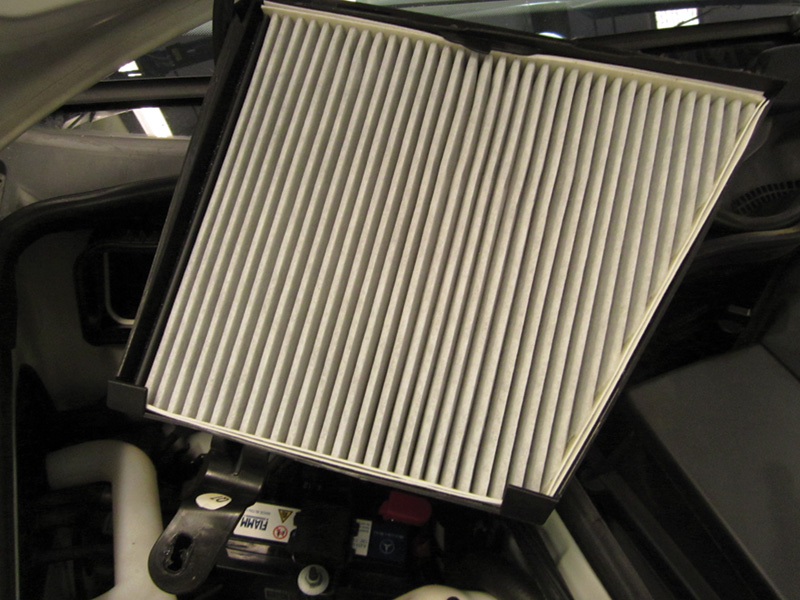
Proper installation of a quality filter. Note the nice seal along all sides that ensures maximum performance.
One of the defining features of any Mercedes-Benz vehicle is having cabin air filtration as standard equipment. This system is designed to filter 100% of the air entering the ventilation system to provide the cleanest air for the maximum passenger comfort possible. Complete filtration is accomplished through two means. The first is a multi-layer particulate filter that’s tasked with capturing dirt, dust, pollen, and other solid pollutants. The second is cleaning such gasses as ozone, exhaust fumes, smoke, and other potentially hazardous or odorous gasses by trapping them within a filter coated with a granulated active charcoal layer. Depending on the model, vehicle filters can be used individually, or both types of filtration can be combined into a single dual-purpose filter known as a combi-filter.
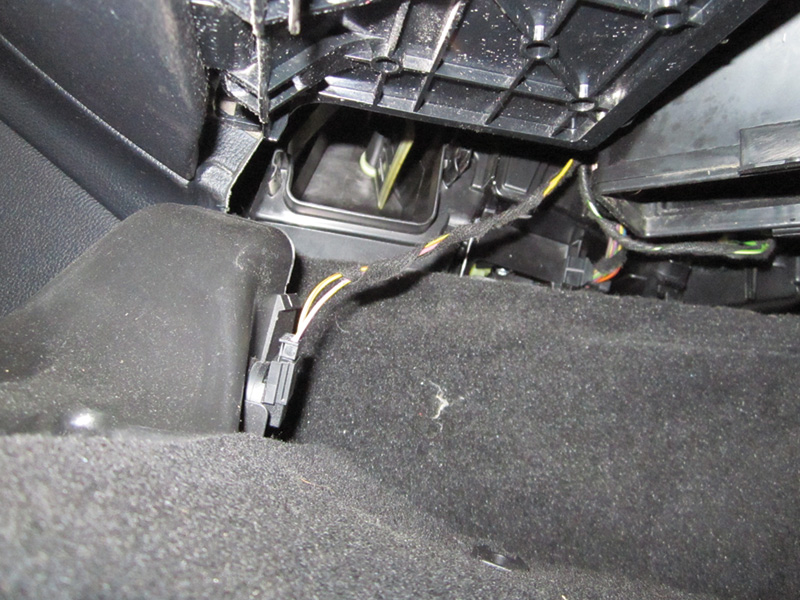
When removing panels to access a cabin filter, care must be taken not to damage components such as this temperature sensor and cable attached to the access panel.
Besides the obvious health benefits, cabin filters help to provide another positive result: HVAC system longevity. Filtering keeps debris out of ducts and moving components, so heating and cooling coils are kept clean. This keeps the system free of clogs and eliminates particles that could add friction to moving parts that would accelerate wear.
Regular Maintenance
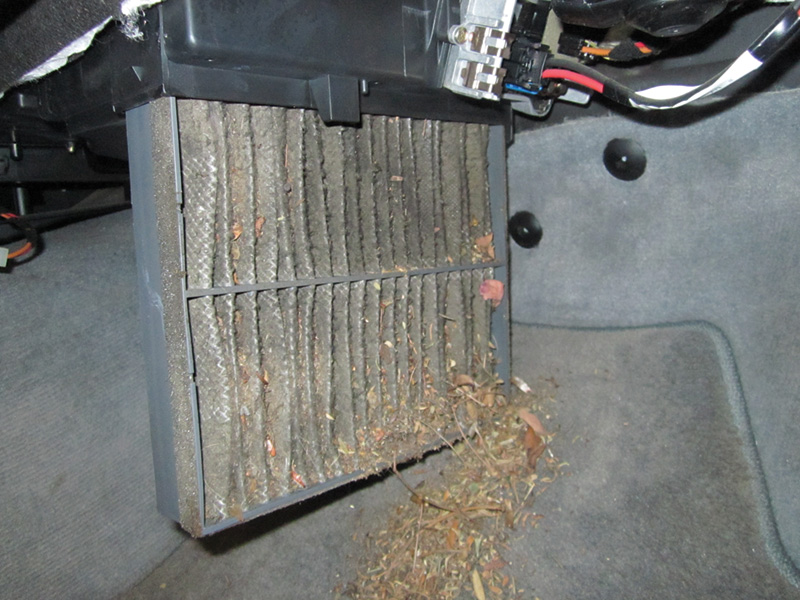
This is the result of poor maintenance — a clogged filter with mold growth. This vehicle had both low airflow and a bad smell.
Cabin filters have a limited lifespan and should be checked and changed when needed along with other vehicle maintenance. Filters should be changed according to the Mercedes-Benz maintenance schedule for the particular vehicle being serviced. In some cases, more frequent filter replacement may be necessary for vehicle operation in densely-developed or heavily-polluted areas. Allowing filters to become saturated to the point where they no longer allow the full flow of air is not good for the customer or the automobile. Clogged filters choke airflow, which leads to bacteria and mold growth. This may pose a health hazard for some occupants.
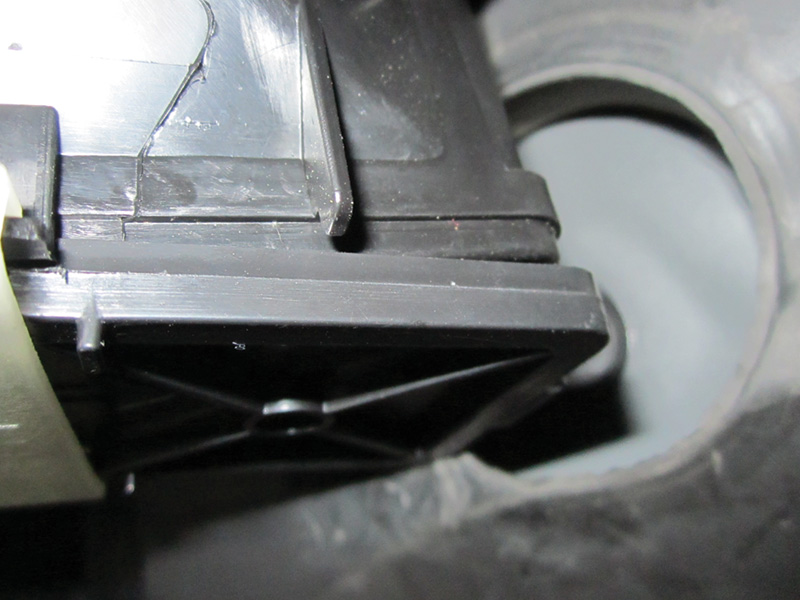
This vehicle was in for repair, the complaint being a whistling noise from the dash after previous work at a quick lube facility. Inspection revealed that a poorly fitting aftermarket cabin filter would not completely seal, thus letting unfiltered air pass and producing the noise.
Additionally, the lack of flow also stresses the system because it’s working harder to pull air through dirty filter media that acts as an obstruction. As an independent service professional, you should be able to detect the warning signs of clogged filters. Stale or musty odors in the cabin, low air flow from the dash vents, the sound of a labored blower motor, and excessive dirt and dust inside the vehicle are all signs of a neglected filtration system that may not have been noticed by the owner since the loss of performance would have been gradual. A sign that’s a safety concern is fogged windows — low airflow allows moisture to accumulate.
Avoiding the cheap pitfall
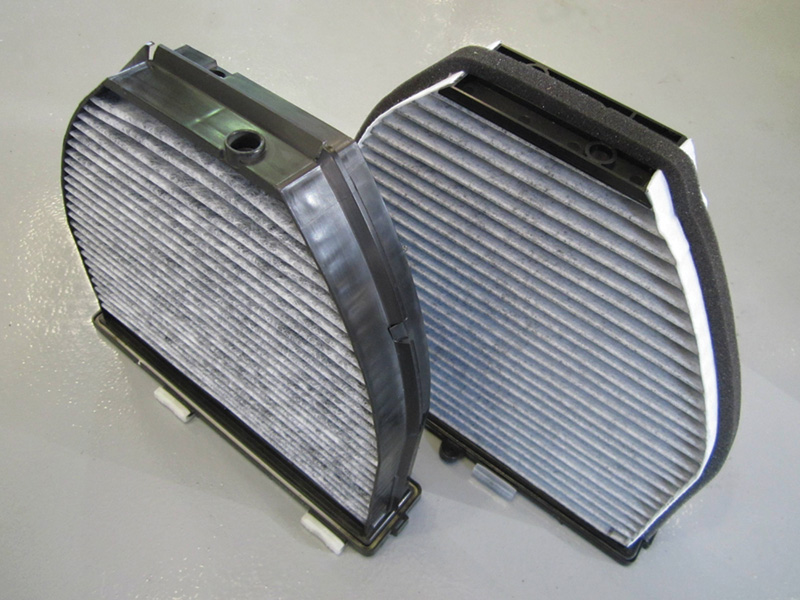
Note the solid full-frame construction of the genuine Mercedes-Benz filter on the left compared to the flimsy, distorted, cheap aftermarket filter on the right. Also, note the difference in the carbon layer that can be seen on both. The genuine filter contains much more.
When it comes time to replace cabin filters, there is absolutely no substitute for original Mercedes-Benz (OE) parts. Replacing the OE filter with an inferior product because of cost simply means the loss of system integrity. Genuine Mercedes-Benz filters are made with an electrostatic charge, which aids in the filtration process by allowing oppositely-charged particles to be attracted and trapped by the filter while particles with a like charge are repelled from and kept out of the system by the magnetic force field. Electrostatic filters cannot be cleaned and must be replaced; you could lose this technology with a cheap replacement filter. Also, most non-OE replacements have a thinner filtration layer made of poor quality paper or fleece. This means that its ability to filter and trap contaminates has been greatly reduced, and leads to poor cabin air quality as well as a shorter filter life. Another pitfall is poor fit, and they often have very flimsy construction, which leads to difficult installation. Without the correct fit, unfiltered air will bypass through the gaps and compromise the system.
No Substitute for Quality
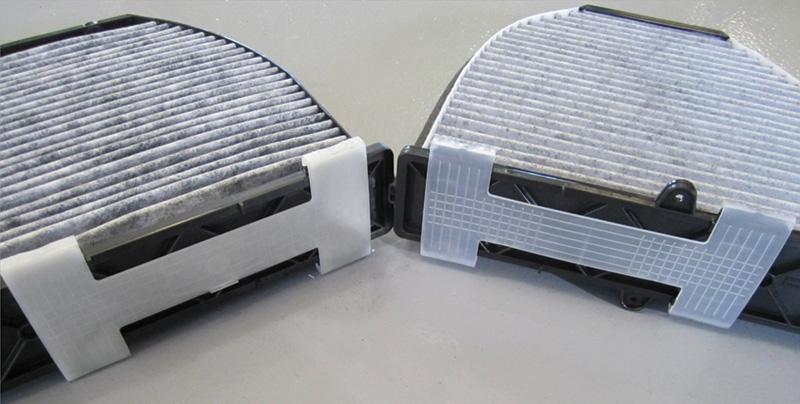
The aftermarket filter on the right has extra screw tabs, which aren’t needed on the OE filter since it seals tightly as designed.
OE filters have an engineered multi-layered design made with quality materials to an exact specification for fit and performance. Your local Mercedes-Benz parts distributor has the expertise to get you the right part for the right application, and often at competitive prices. In the end it all boils to a simple question: Would you really sacrifice quality to save a few bucks?


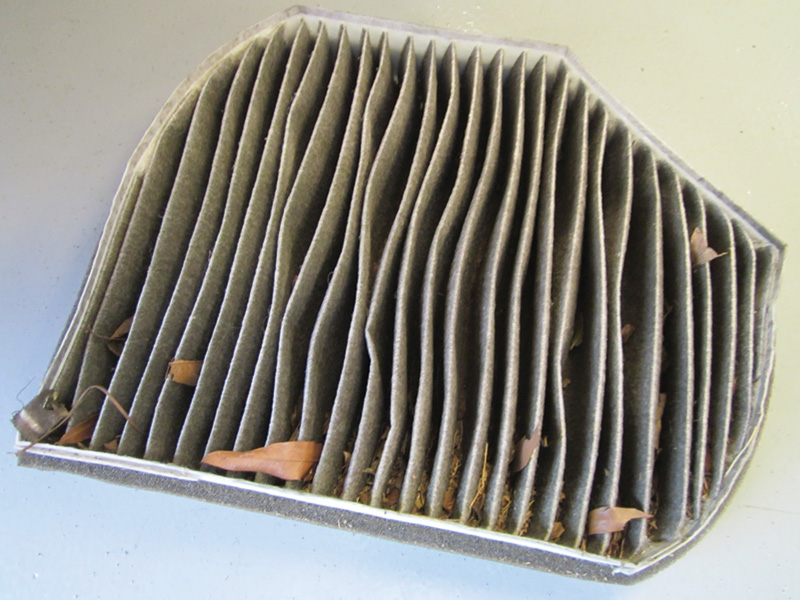




0 Comments